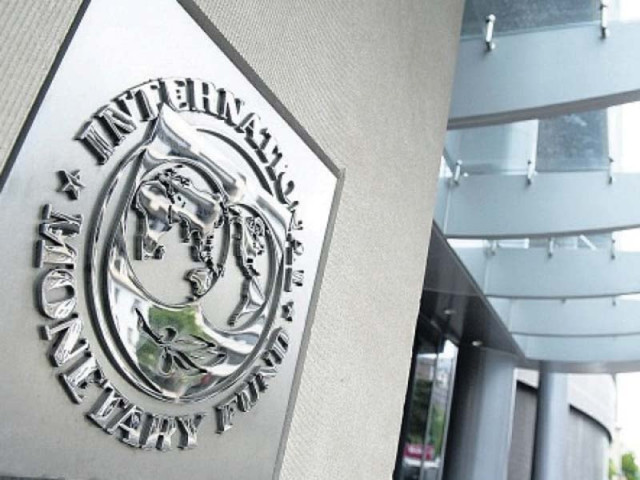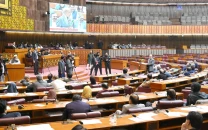Foreign exchange reserves not at ‘comfortable levels’
IMF mission chief says Pakistani rupee needs depreciation to remain competitive

The IMF report also showed that Pakistan’s inflation-adjusted exchange rate, known as Real Effective Exchange Rate (REER), should be Rs118.3 to a dollar. PHOTO: FILE
The remarks come amid a plethora of boasts given by the Pakistani government over the comfortable position the country finds itself in when it comes to managing the import bill and foreign exchange reserves.
Foreign exchange reserves: Despite much-trumpeted level, borrowings continue
However, the IMF said reserves may have increased, but have not reached “comfortable levels”.
Not only that, the IMF report also disclosed that accumulative losses incurred by the power sector and three main public sector enterprises alarmingly increased to 4.6% of Gross Domestic Product or Rs1.36 trillion by end of its three-year bailout programme. The volume of losses is significantly higher than reported in 2013 - the year Pakistan entered into a three-year IMF programme to avoid default on international payments and put the fiscal front back in order.
The revelations put a big question mark over the official claims of achieving monetary and fiscal objectives under the three-year IMF programme that ended last month.
“International reserves, while having tripled over the programme period have not yet reached comfortable levels” according to the IMF report.
While addressing a press conference through video-link from Washington, IMF Mission Chief to Pakistan, Harald Finger, defended the government’s economic progress. “Pakistan is in a much safer position than it was three years ago but we have to recognise that implementing reforms is an ongoing process and not everything is resolved after three years,” said Finger while responding to a question.
Room for improvement
The foreign current reserves held by State Bank of Pakistan stood at $18.41 billion as of October 7, according to the central bank - a level the IMF believes is still below the comfort zone.
Foreign exchange: SBP’s reserves rise 4.2%
The IMF report also showed that Pakistan’s inflation-adjusted exchange rate, known as Real Effective Exchange Rate (REER), should be Rs118.3 to a dollar. “We have estimated that the REER is somehow overvalued between 5% to 20%, depending upon which model you apply, although these models are not very accurate but give an indication where things stand,” said Finger.
He maintained that Pakistan’s nominal exchange rate, trading at Rs105.3 to a dollar, is market determined and flexible.
The IMF report stated that pronounced real appreciation of the rupee has negatively affected trade competitiveness. It cautioned that continued appreciation of the real effective exchange rate, in the context of an appreciating US dollar vis-à-vis the pound and euro, would further erode export competitiveness and affect remittances.
Finger said that the current account deficit is projected at 1.5% of the GDP by the end of this year due to high oil prices and increase in imports under the China-Pakistan Economic Corridor (CPEC). He said that there will be an increase in external debt repayments in the next three years but they will not be heavy, therefore, we do not see liquidity pressure.
Foreign exchange: SBP’s reserves amount to $16.82b
He said repayments under CPEC arrangement will add 0.4% of the GDP in the longer run, which can be managed if the corridor is wisely implemented. He emphasised that transparency and competitiveness should be ensured in CPEC deals and CPEC power purchase agreements should also be favourable to power consumers.
PSEs’ losses
The cumulative arrears of the power sector - Pakistan Steel Mills, Pakistan International Airlines (PIA) and Pakistan Railways - increased to 4.6% of the GDP or Rs1.36 trillion, revealed the report. The power sector arrears amounted to 2.3% of the GDP or Rs680 billion -up from Rs492 billion in 2013. The PSEs’ losses stood at 2.3% of the GDP or Rs680 billion in 2015-16 as against 1.7% of the GDP in 2013.
In total, the arrears amounted to Rs1.36 trillion, which the government has not booked into the budget. Independent experts said that if these arrears are added in the fiscal deficit, there would be a big question mark on the performance of the government.
The losses incurred by PIA, PSM and Pakistan Railways are still more than two-thirds than what is spent under the Benazir Income Support Programme on the poorest of the country, said Finger.
However, he defended the government’s performance in the energy sector. The annual accumulation of the circular debt has come down from Rs200 billion in 2013 to just Rs8 billion by end of June 2016, said Finger. To a question, he said that the government does not want to pay off the circular debt stock from the budget but wants to address it by offering minority shares of power distribution companies at the stock exchange.
Continuing energy sector reforms, improving business climate and PSEs reforms beyond programme will be key to foster higher and more inclusive medium-term growth and limit fiscal risks, said Finger while highlighting challenges ahead for Pakistan.
Published in The Express Tribune, October 14th, 2016.
Like Business on Facebook, follow @TribuneBiz on Twitter to stay informed and join in the conversation.


















COMMENTS
Comments are moderated and generally will be posted if they are on-topic and not abusive.
For more information, please see our Comments FAQ